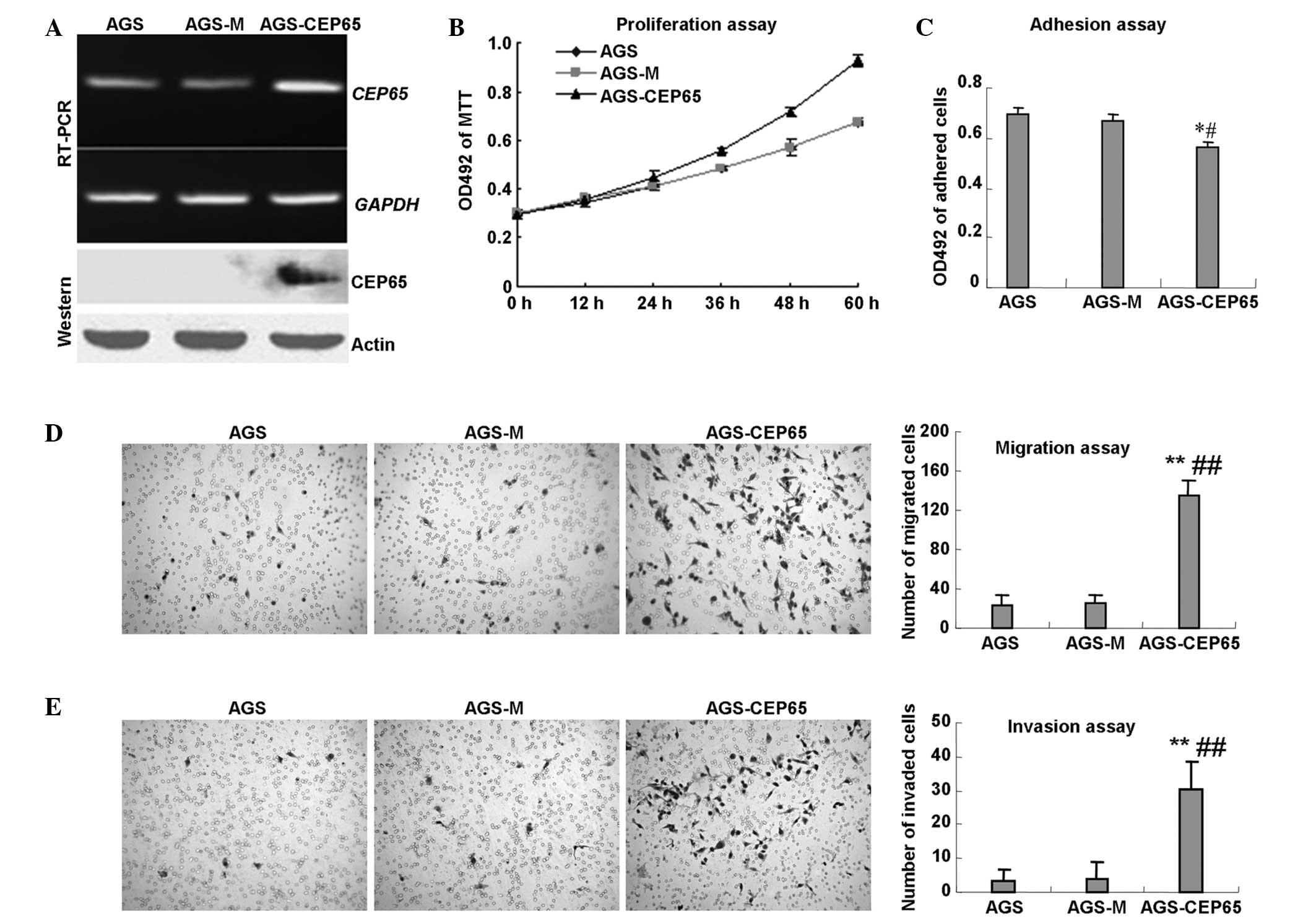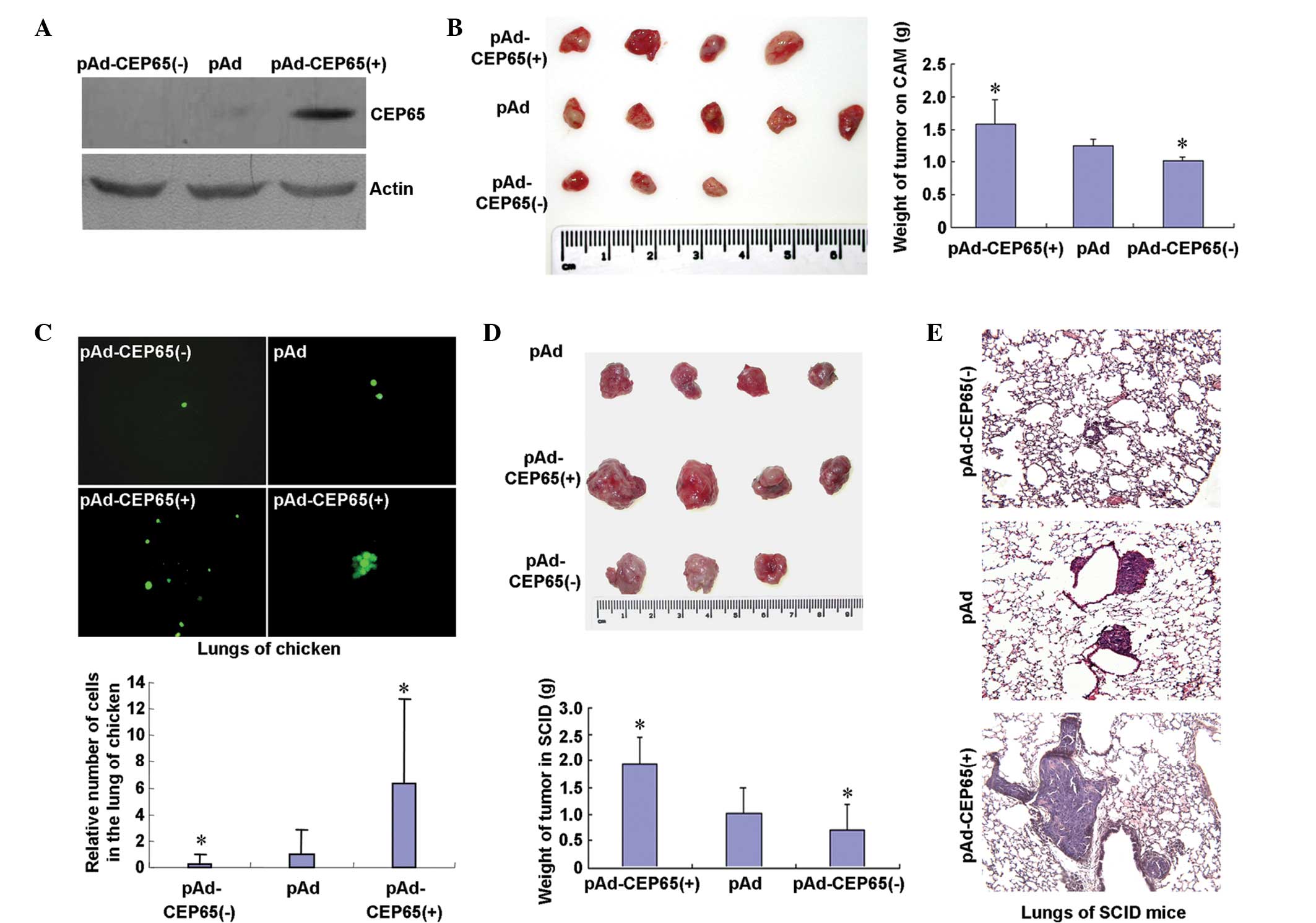|
1
|
Li J, Wang Y, Wang Z and Dong Z:
Influences of amino acid sequences in FR1 region on binding
activity of the scFv and Fab of an antibody to human gastric cancer
cells. Immunol Lett. 71:157–165. 2000. View Article : Google Scholar : PubMed/NCBI
|
|
2
|
Xu G, Zhang M, Liu B, et al:
Radioimmunoguided surgery in gastric cancer using 131-I labeled
monoclonal antibody 3H11. Semin Surg Oncol. 10:88–94. 1994.
View Article : Google Scholar : PubMed/NCBI
|
|
3
|
Chen DH and Shou CC: Molecular cloning of
a tumor-associated antigen recognized by monoclonal antibody 3H11.
Biochem Biophys Res Commun. 280:99–103. 2001. View Article : Google Scholar : PubMed/NCBI
|
|
4
|
Jin GL, Zhang JZ, Su R, Liu XY, Wu J, Meng
L and Shou CC: Characterization of the interaction between low
density lipoprotein receptor-related protein-associated protein 1
and the cancer and embryo expression protein 65. Beijing Da Xue Xue
Bao. 37:297–301. 2005.(In Chinese). PubMed/NCBI
|
|
5
|
Sayer JA, Otto EA, O’Toole JF, Nurnberg G,
Kennedy MA, Becker C, Hennies HC, Helou J, Attanasio M, Fausett BV,
et al: The centrosomal protein nephrocystin-6 is mutated in Joubert
syndrome and activates transcription factor ATF4. Nat Genet.
38:674–681. 2006. View
Article : Google Scholar : PubMed/NCBI
|
|
6
|
Guo J, Jin G, Meng L, Ma H, Nie D, Wu J,
Yuan L and Shou C: Subcellullar localization of tumor-associated
antigen 3H11Ag. Biochem Biophys Res Commun. 324:922–930. 2004.
View Article : Google Scholar : PubMed/NCBI
|
|
7
|
Fukasawa K: Oncogenes and tumour
suppressors take on centrosomes. Nat Rev Cancer. 7:911–924. 2007.
View Article : Google Scholar
|
|
8
|
He TC, Zhou S, da Costa LT, Yu J, Kinzler
KW and Vogelstein B: A simplified system for generating recombinant
adenoviruses. Proc Natl Acad Sci USA. 95:2509–2514. 1998.
View Article : Google Scholar : PubMed/NCBI
|
|
9
|
An P, Lei H, Zhang J, Song S, He L, Jin G,
Liu X, Wu J, Meng L, Liu M and Shou C: Suppression of tumor growth
and metastasis by a VEGFR-1 antagonizing peptide identified from a
phage display library. Int J Cancer. 111:165–173. 2004. View Article : Google Scholar : PubMed/NCBI
|
|
10
|
Wang H, Wang H, Shen W, Huang H, Hu L,
Ramdas L, Zhou YH, Liao WS, Fuller GN and Zhang W: Insulin-like
growth factor binding protein 2 enhances glioblastoma invasion by
activating invasion-enhancing genes. Cancer Res. 63:4315–4321.
2003.PubMed/NCBI
|
|
11
|
Hadler-Olsen E, Winberg JO and
Uhlin-Hansen L: Matrix metalloproteinases in cancer: their value as
diagnostic and prognostic markers and therapeutic targets. Tumour
Biol. 34:2041–2051. 2013. View Article : Google Scholar : PubMed/NCBI
|
|
12
|
Hapke S, Kessler H, Arroyo de Prada N,
Benge A, Schmitt M, Lengyel E and Reuning U: Integrin
alpha(v)beta(3)/vitronectin interaction affects expression of the
urokinase system in human ovarian cancer cells. J Biol Chem.
276:26340–26348. 2001. View Article : Google Scholar : PubMed/NCBI
|
|
13
|
Pola C, Formenti SC and Schneider RJ:
Vitronectin-αvβ3 integrin engagement directs hypoxia-resistant mTOR
activity and sustained protein synthesis linked to invasion by
breast cancer cells. Cancer Res. 73:4571–4578. 2013. View Article : Google Scholar : PubMed/NCBI
|
|
14
|
Kashyap AS, Hollier BG, Manton KJ,
Satyamoorthy K, Leavesley DI and Upton Z: Insulin-like growth
factor-I:vitronectin complex-induced changes in gene expression
effect breast cell survival and migration. Endocrinology.
152:1388–1401. 2011. View Article : Google Scholar : PubMed/NCBI
|
|
15
|
Chaudhary AK, Pandya S, Ghosh K and
Nadkarni A: Matrix metalloproteinase and its drug targets therapy
in solid and hematological malignancies: an overview. Mutat Res.
753:7–23. 2013. View Article : Google Scholar : PubMed/NCBI
|
|
16
|
Stetler-Stevenson WG and Seo DW: TIMP-2:
an endogenous inhibitor of angiogenesis. Trends Mol Med. 11:97–103.
2005. View Article : Google Scholar : PubMed/NCBI
|
|
17
|
Stetler-Stevenson WG and Gavil NV:
Normalization of the tumor microenvironment: evidence for tissue
inhibitor of metalloproteinase-2 as a cancer therapeutic. Connect
Tissue Res. 55:13–19. 2014. View Article : Google Scholar : PubMed/NCBI
|
|
18
|
Brand K, Baker AH, Perez-Cantó A, Possling
A, Sacharjat M, Geheeb M and Arnold W: Treatment of colorectal
liver metastases by adenoviral transfer of tissue inhibitor of
metalloproteinases-2 into the liver tissue. Cancer Res.
60:5723–5730. 2000.PubMed/NCBI
|
|
19
|
Zhao YG, Xiao AZ, Park HI, Newcomer RG,
Yan M, Man YG, Heffelfinger SC and Sang QX: Endometase/matrilysin-2
in human breast ductal carcinoma in situ and its inhibition by
tissue inhibitors of metalloproteinases-2 and -4: a putative role
in the initiation of breast cancer invasion. Cancer Res.
64:590–598. 2004. View Article : Google Scholar : PubMed/NCBI
|
|
20
|
Lu W, Zhou X, Hong B, Liu J and Yue Z:
Suppression of invasion in human U87 glioma cells by
adenovirus-mediated co-transfer of TIMP-2 and PTEN gene. Cancer
Lett. 214:205–213. 2004. View Article : Google Scholar : PubMed/NCBI
|
|
21
|
Lee YK, So IS, Lee SC, Lee JH, Lee CW, Kim
WM, Park MK, Lee ST, Park DY, Shin DY, et al: Suppression of
distant pulmonary metastasis of MDA-MB 435 human breast carcinoma
established in mammary fat pads of nude mice by retroviral-mediated
TIMP-2 gene transfer. J Gene Med. 7:145–157. 2005. View Article : Google Scholar
|
|
22
|
Lin CW, Chen PN, Chen MK, Yang WE, Tang
CH, Yang SF and Hsieh YS: Kaempferol reduces matrix
metalloproteinase-2 expression by down-regulating ERK1/2 and the
activator protein-1 signaling pathways in oral cancer cells. PLoS
One. 8:e808832013. View Article : Google Scholar : PubMed/NCBI
|
|
23
|
Galm O, Suzuki H, Akiyama Y, Esteller M,
Brock MV, Osieka R, Baylin SB and Herman JG: Inactivation of the
tissue inhibitor of metalloproteinases-2 gene by promoter
hypermethylation in lymphoid malignancies. Oncogene. 24:4799–4805.
2005. View Article : Google Scholar : PubMed/NCBI
|
|
24
|
Wang FQ, So J, Reierstad S and Fishman DA:
Vascular endothelial growth factor-regulated ovarian cancer
invasion and migration involves expression and activation of matrix
metalloproteinases. Int J Cancer. 118:879–888. 2006. View Article : Google Scholar
|
|
25
|
Herz J, Hamann U, Rogne S, Myklebost O,
Gausepohl H and Stanley KK: Surface location and high affinity for
calcium of a 500-kd liver membrane protein closely related to the
LDL-receptor suggest a physiological role as lipoprotein receptor.
EMBO J. 7:4119–4127. 1988.PubMed/NCBI
|
|
26
|
Strickland DK, Ashcom JD, Williams S,
Burgess WH, Migliorini M and Argraves WS: Sequence identity between
the alpha 2-macroglobulin receptor and low density lipoprotein
receptor-related protein suggests that this molecule is a
multifunctional receptor. J Biol Chem. 265:17401–17404.
1990.PubMed/NCBI
|
|
27
|
Willnow TE, Rohlmann A, Horton J, Otani H,
Braun JR, Hammer RE and Herz J: RAP, a specialized chaperone,
prevents ligand-induced ER retention and degradation of LDL
receptor-related endocytic receptors. EMBO J. 15:2632–2639.
1996.PubMed/NCBI
|
|
28
|
Bu G: Receptor-associated protein: a
specialized chaperone and antagonist for members of the LDL
receptor gene family. Curr Opin Lipidol. 9:149–155. 1998.
View Article : Google Scholar : PubMed/NCBI
|
|
29
|
Herz J and Strickland DK: LRP: a
multifunctional scavenger and signaling receptor. J Clin Invest.
108:779–784. 2001. View Article : Google Scholar : PubMed/NCBI
|
|
30
|
Yamamoto K, Troeberg L, Scilabra SD,
Pelosi M, Murphy CL, Strickland DK and Nagase H: LRP-1-mediated
endocytosis regulates extracellular activity of ADAMTS-5 in
articular cartilage. FASEB J. 27:511–521. 2013. View Article : Google Scholar :
|
|
31
|
Mantuano E, Lam MS and Gonias SL: LRP1
assembles unique co-receptor systems to initiate cell signaling in
response to tissue-type plasminogen activator and myelin-associated
glycoprotein. J Biol Chem. 288:34009–34018. 2013. View Article : Google Scholar : PubMed/NCBI
|
|
32
|
Woolfson DN, Bartlett GJ, Bruning M and
Thomson AR: New currency for old rope: from coiled-coil assemblies
to α-helical barrels. Curr Opin Struct Biol. 22:432–441. 2012.
View Article : Google Scholar : PubMed/NCBI
|
|
33
|
Koyanagi M, Hijikata M, Watashi K, Masui O
and Shimotohno K: Centrosomal P4.1-associated protein is a new
member of transcriptional coactivators for nuclear factor-kappaB. J
Biol Chem. 280:12430–12437. 2005. View Article : Google Scholar : PubMed/NCBI
|












